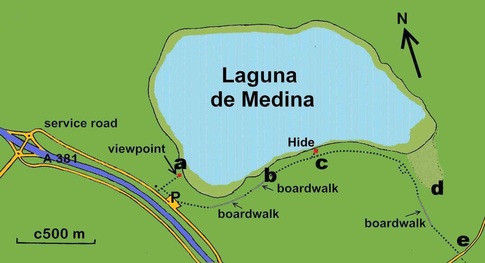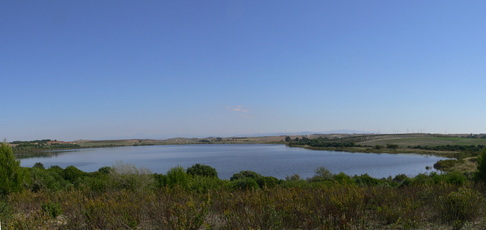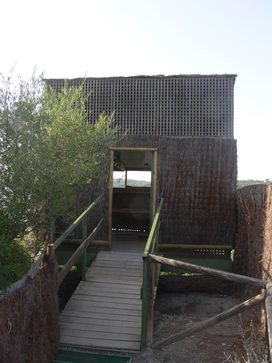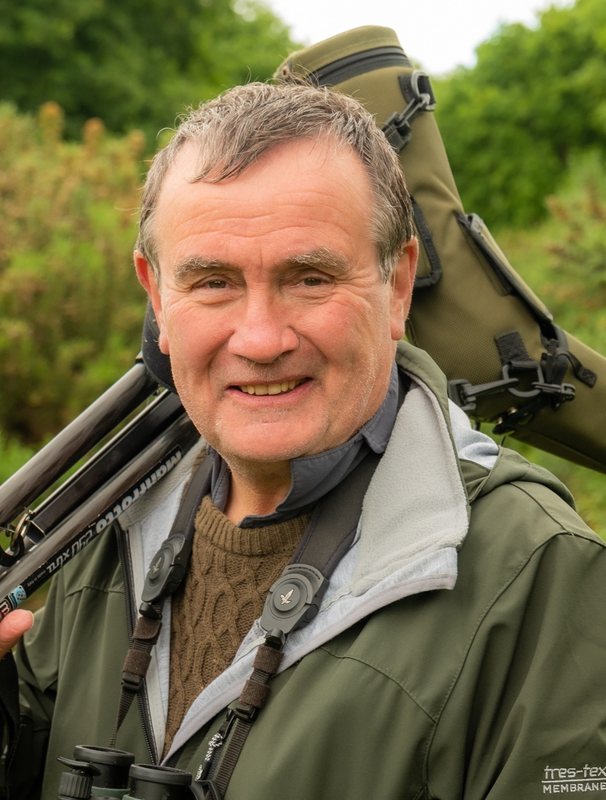
There’s a good viewpoint behind a small white building (a). The views across the lake are excellent, but rather distant (a ‘scope is essential). Carefully examine the birds to your right here as it has the reputation for being good for Crested Coot. To be honest, though, you’d need to be familiar with the species and a good 40+ zoom to be sure! As noted above, two raised wooden walkways along the southern edge have improved visibility. A path snakes its way off this track to a hide (c) which now enjoys good unrestricted views of the lake. Despite the notice at the end of the track, the path (sendero) can now be followed across a wooden causeway ultimately to link with the Lagunas de Puerto Real (and beyond). This area can also be accessed via a minor road (e). Savi’s Warbler is possible in the marsh here (d).

The number of White-headed Ducks present was in decline, apparently due to the introduction of carp to the laguna. However, numbers have bounced back (400+ Sept 2010) seem to have bounced back. Marbled Duck are said to be regular and Ferruginous Duck are occasional (e.g. 6 in Sept. 2010). Also present are good numbers of other waterfowl (inc. Red-crested Pochard), herons (inc. Night Heron, Little Bittern and Great White Egret), Purple Gallinule, grebes (esp Black-necked) gulls and marsh terns (in summer/passage Whiskered is frequent , but I have also seen White-winged and Black Terns). Flamingo are regular and a variety of waders appear especially when water levels are low. Pratincole often hawk over the area (esp. mornings and evenings during migration periods) in good numbers. Large numbers of hirundines (inc. Red-rumped Swallows & Crag Martins) and swifts (Alpine, Common and Pallid) can also be seen here.

The declining Rufous Bushchat may still be present, but most recent records seem to be of migrants. Melodious Warbler is present as, later in the season, are much smaller numbers of Olivaceous Warbler (both frequent the tamarisks so knowing their songs helps). Surrounding farmlands have Stone Curlew and all the more familiar Spanish raptors may be seen in the area. In recent years Black-winged Kite has become a regular visitors (esp. in the mornings and evenings). For this species, and other raptors, try taking the first turning to the south off the service road. This road takes you to an open area (e) south of the main lagoon (which can also be reached by the boardwalk as noted above)

 RSS Feed
RSS Feed
